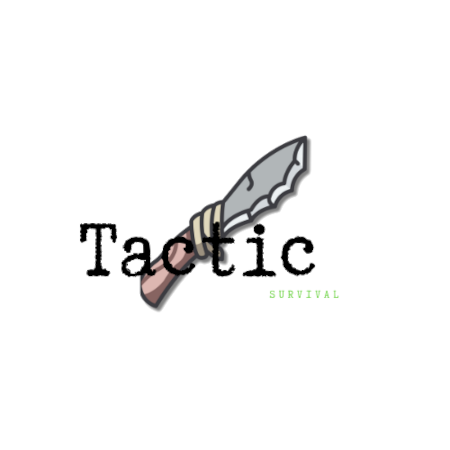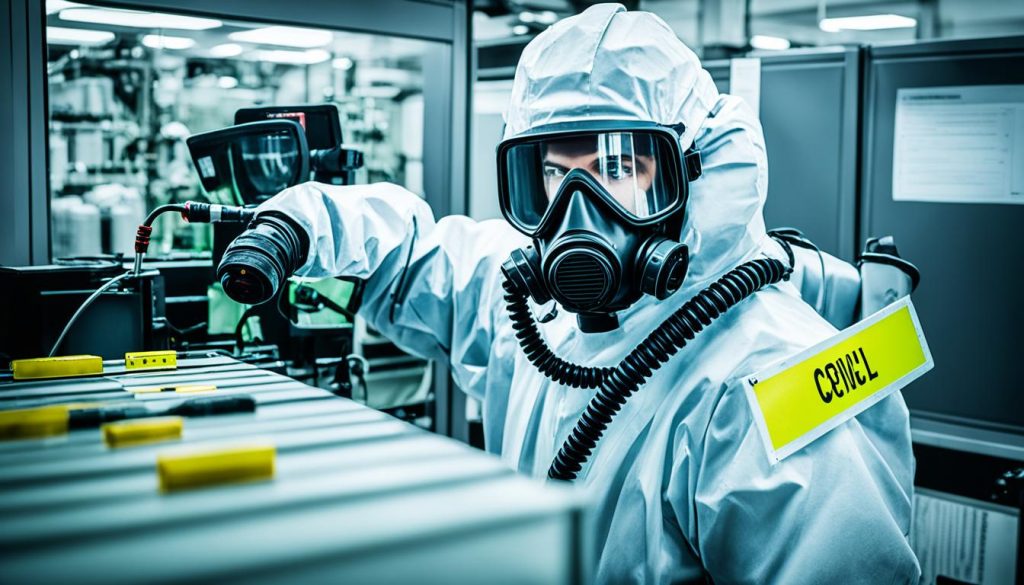More than 1,000 chemical incidents happen in the United States each year. These can be from accidents or on purpose, like terrorism. They put everyone’s health and safety at risk. Knowing what to do and having the right gear is key to staying safe.
The Centers for Disease Control and Prevention (CDC) and other groups share lots of info on how to prepare for these threats. They help us understand the dangers. This makes it easier to protect ourselves and our communities. Knowing and doing the right things makes us stronger against these risks.
Key Takeaways:
- More than 1,000 chemical incidents occur in the United States annually, highlighting the need for preparedness.
- The CDC, Bureau of Diplomatic Security, and DHS S&T offer valuable resources on chemical and biological threat preparedness.
- Understanding the nature of these threats and having the right protective equipment is essential in mitigating their impact.
- Preparedness enhances individual and community resilience in the event of a chemical or biological incident.
- By staying informed and taking proactive measures, we can safeguard ourselves and our communities from these threats.
Understanding Chemical and Biological Threats
Chemical and biological threats are risky and demand deep understanding to lessen their harm. They come in different types that act in unique ways. Thus, knowing their properties is key.
Chemical agents, like nerve agents, are often in liquid or aerosol forms. They can harm instantly upon touch or breathing. Biological agents, however, like viruses, can show effects days later.
Normally, breathing in these threats is the biggest risk. Knowing warning signs can help spot an issue early. Signs may be strange smells, weird sprays, or fog that’s not from the weather.
If these threats hit, acting fast to protect your breath and getting medical help is crucial. Wearing the right gear, such as masks and suits, can lower the danger.
With the right info and readiness steps, we can face these threats better. This way, we safeguard our communities and reduce the threats’ effects.
Protective Measures and Decontamination Procedures
When dealing with chemical and bio threats, protecting our airways is key. It’s wise to leave the area if you’re not safely dressed, including a mask and special clothing. This gear keeps us safe from breathing in harmful substances.
If you can’t leave, act fast to keep yourself safe. Proper respiratory masks or respirators are crucial for filtering the air. They stop dangerous substances from entering our lungs.
After using protective gear, decontamination steps are vital. This includes thoroughly washing with soap and warm water, or a weak bleach mix, to remove these agents from the skin. Focus on areas like hands, face, and any bare skin.
For liquid chemicals, talcum powder helps by soaking them up. Remember, this step isn’t a replacement for seeking medical help. Always see a doctor after a potential exposure for proper care.
Always follow the right steps to protect yourself from chemical and bio threats. Be ready to react and keep safe.
Decontamination Procedure Summary
Here’s the basic decontamination process for dangerous agents:
| Decontamination Procedure | Description |
|---|---|
| 1. Thorough washing | Clean exposed areas well with soap and water or a bleach mix. |
| 2. Talcum powder or flour | Use these to soak up and make liquid agents less harmful. |
| 3. Seek medical attention | No matter how small the exposure, see a doctor for a check-up. |
Stay Protected and Be Prepared
Following these steps and getting professional help are crucial for staying safe. Always put your health first, and act quickly if exposed.
Warning Signs of an Attack or Incident
Knowing the signs of a chemical or biological attack is crucial. It helps everyone spot trouble early. This can save lives and reduce harm.
- Droplets of oily film
- Unusual odors
- Unexplained spraying
- Victims exhibiting symptoms such as nausea and difficulty breathing
Seeing strange drops or smells can tip you off. Also, strange fog or oddly dressed people are red flags. If you notice anything weird, tell the authorities right away. Early reporting can make a big difference.
“The ability to recognize and report warning signs plays a vital role in protecting ourselves and our communities from chemical and biological threats. Every individual has a responsibility to stay vigilant and promptly report any suspicious activity.” – Dr. Elizabeth Ryan, Chemical Biological Protection Expert
Reporting Suspicious Signs:
- Right away, contact local authorities like the police or fire department.
- Tell them all you can about what you’ve seen. Remember where, when, and what it was.
- Work with officials and do as they say for your and others’ safety.
- Avoid touching any strange chemicals or materials.
Keeping an eye out and acting fast is important for community safety. Always report anything suspicious. This helps prevent big problems from chemical and biological threats.
| Signs of a Chemical or Biological Attack | Recommended Actions |
|---|---|
| Droplets of oily film | Immediately leave the area and report the observation to authorities. |
| Unusual odors | Evacuate to a safe location and inform emergency services. |
| Unexplained spraying | Take cover, protect airways, and seek medical attention if symptoms arise. |
| Symptoms in victims, such as nausea and difficulty breathing | Assist victims in seeking medical help and notify authorities. |
What To Do In Case of an Attack
During a chemical or biological attack, ensuring clean air is a must. It’s key to get away from where the danger is to lower the risk. If you can’t leave, go inside and pick a room high up. This keeps you safer. Also, cover your mouth and nose with any cloth or mask to avoid breathing in bad stuff.
If you come into contact with something harmful, act fast. Wash the area with soap and water to get rid of dangerous stuff. If you start feeling unwell, get medical help as soon as possible. Tell the doctors everything you think happened so they can treat you better.
Knowing what to do before something bad happens is very important. You should learn how to protect yourself and what to do if something does happen. Besides getting medical help, think about these:
- Keep an eye out for news: Always check with local authorities to learn the latest about the danger.
- Do what you’re told: Listen to the experts and do what they say to stay safe.
- Tell others: If you’re not alone, share warnings and help everyone do what’s best to keep safe.
- Find a safe spot: Have a place ready where you can hide and be safe until you know more.
Safehaven Equipment Checklist
To be ready for chemical or biological attacks, having the right gear matters. Make sure you have these items:
| Equipment | Quantity |
|---|---|
| Biological/chemical rated gas masks | 1 per person |
| Waterproof clothing | 1 set per person |
| 3-day supply of food and water | 1 per person |
| Flashlights | 1 per person |
| Battery-operated radio | 1 per person |
| First aid kit | 1 per household/workplace |
| Fire extinguisher | 1 per household/workplace |
Remember, spotting danger early and acting quickly can save lives. By preparing and having the right tools, you boost your safety in emergencies.
Conclusion
It’s key to be ready for chemical and biological dangers to keep ourselves and our communities safe. Knowing the signs of an attack, how to shield yourself, and what to do after is crucial. This lessens the harm these threats can cause.
At all levels, from national to local, expert teams focus on early detection, cleaning up, and quickly helping those affected. They make sure the tools we already have for dealing with dangerous chemicals and diseases are strong. It’s better to improve what we have than to start from scratch for rare attacks.
Military and civilian chemical and biological defense are not the same, as they’re based on different knowledge and needs. National groups like the NDMS and local Medical Strike Teams are vital. They step in when there’s a big chemical or biological attack.
Spotting and naming harmful agents is hard, so doctors often treat based on symptoms first. This is because there aren’t always specific cures for each agent. The work of federal groups like OSHA and the FDA is important. They set rules on protective gear use and help make some treatments available for testing.


